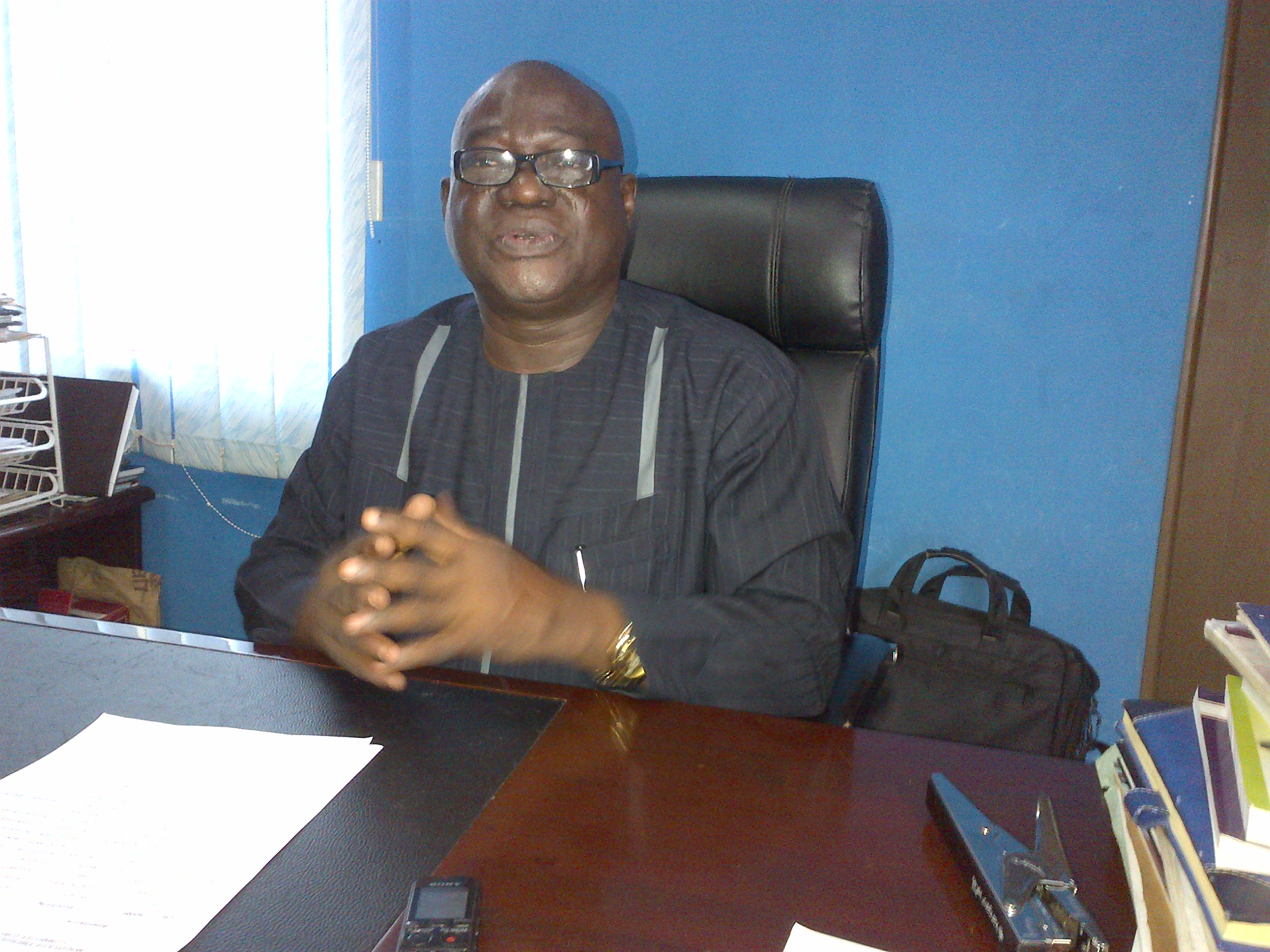Why Cost Of Doing Business In Nigeria’s Port Is High- Terminal Operators

Princess (Dr.)Vicky Haastrup is the Chairman of Seaport Terminal Operators Association of Nigeria(STOAN). She was the lead speaker at the just concluded one-day town hall meeting organized by the League of Maritime Editors and Publishers(LOMEP)in Lagos, last week. Speaking for the entire port concessionaires in Nigeria, in a no-hold- barred session, she did justice to the topic:”Impact of Automation in Cargo Handling Operations at the ports” under the theme:”Achieving Effective Digitalization in the Nigeria’s maritime sector”. She blamed the government agencies for the rise in the cost of doing business in the port and bemoaned the deplorable state of infrastructure which renders the available superstructures idle, thereby creating wastages in the logistics supply chain. In her presentation, 81.7 per cent of the charges incurred by consignees arise from customs processes, a development that has rendered the government policy of Ease of doing business useless. She blamed terminal operators as well. Find out where they have erred! Her words:
I will like to start this presentation by commending the League of Maritime Editors for bringing stakeholders together to discuss this important issue.
Town hall meetings of this nature provide the platform for stakeholders to share thoughts, ideas and important updates. It is also an avenue through which industry leaders can receive real, honest and unfiltered feedback from stakeholders in the port and logistics value chain.
Discussions at meetings of this nature are vital to the progress of our industry. We all become wiser and the industry works better through the healthy exchange of divergent viewpoints. By this, my emphasis is on the importance of engaging in constructive discussions, as opposed to grandstanding and unhealthy arguments.
My role at this Town Hall meeting today is to speak on the Impact of Automation in Cargo Handling Operation at our ports.
The word impact connotes “a marked effect or influence” that an object or subject or phenomenon has on another. The effect or influence could be positive or negative.
The word automation, on the other hand, is concerned with executing processes by means of programmed commands combined with automatic feedback control to ensure proper execution of the instructions.
In the context of this presentation, I am using the word “automation” to refer to the use of technological applications to perform repetitive tasks, thereby freeing up employees for higher value work.
Cargo handling operation is a sub-set of port operation. The focus should therefore be on port automation, which is the use of integrated technology to develop intelligent solutions for efficient control of traffic and trade flows at the port with the aim of increasing port capacity and port efficiency.
As operators, we know that automation provides smart solutions for the services that we render. Automation helps us to deliver operational efficiency, improve operational processes, and promote a safer working environment and culture. Technology helps our terminals work better, faster and smarter.
Current State of Nigerian Ports
As journalists covering the maritime beat, you may all recall that in 2006, the Federal Government embarked on a port reform programme. An integral part of the reform was the concession of terminal operations to reputable private terminal operating companies.
Before the concession, port infrastructure had deteriorated; cargo-handling equipment were grossly insufficient. The available equipment were outdated and malfunctioning due to poorly trained manpower, corruption in the equipment procurement process, and poor maintenance.
The ports were poorly maintained and poorly managed. Ships were made to wait for as much as 45 days after arriving Nigeria before they could berth. Consignees were made to go through harrowing experiences and had to wait for up to 60 days to find their cargo among poorly arranged stacks. The hapless consignees had to pay bribes to take delivery of their cargoes when they eventually locate them. The ports were very porous; security was lax, giving unhindered access to all and sundry. Wharf rats were the kings of the port at the time.
Before the concession, the ports were compromised by multitudes of individuals who had taken habitation in various terminals and sheds. The poor access restriction resulted in rowdiness and cargo theft. There were frequent complaints of untraceable or missing cargoes at the stacking area.
During those dark days, shipping lines employed the services of third party equipment hirers even after paying for the same service inside the port.
The government of the day, in its wisdom, decided that port concession was the only option available to change the narratives. The port concession programme was therefore carried to achieve the following objectives:
• Improve service delivery
• Increase the efficiency and productivity of our ports
• Reduce vessel waiting time
• Reduce the cost of doing business at the port
• Free government resources for use in other vital sectors
• Increase the revenue of government generated through the seaports
• Generate more jobs.
I am glad to inform you that the exercise has resulted in significant improvements in port operations in Nigeria.
Terminal Operators in collaboration with the Nigerian Ports Authority have improved the state of the ports in terms of security, quay and yard infrastructure, navigation channels, productivity and efficiency.
The efficiency of our ports has improved multiple folds. Vessel waiting time has since been eliminated resulting in significant savings for importers and exporters. Government now generates revenue in trillions of Naira – through the tax authorities, Customs, NPA and NIMASA – as against the few billions generated before the concession.
The concession, without a doubt, has increased the competitiveness of our ports and enhanced movement of goods across international borders.
I am also glad to inform you that all terminal operators in the six seaports across Nigeria today have effectively deployed technology to drive their operations. Consignees and their agents do not need to be at the port physically with regards to their transactions with terminal operators.
The question that may readily come to your minds at this point will be: why then are there so many people visiting the ports daily in connection with to their consignments? Why is the cost of doing business at the port still high? Well, my answer to this question is: Customs processes.
Despite the tremendous improvements recorded in cargo handling operations and the provision of marine services by NPA, consignees and their agents still face numerous man-made hurdles at the port because cargo clearing processes have remained manual. Customs’ cargo clearing systems in Nigeria, using the words of a former CEO of Nigerian Shippers’ Council Mr. Hassan Bello, have remained “archaic”.
Assessment of Import Duties
While it has now become possible for importers and licensed Customs agents to make their declarations, obtain the Pre-Arrival Assessment Report (PAAR) and pay import duties online, the resort to manual processes from the point of cargo examination creates a huge dent on the drive for port efficiency. From the point of 100% physical examination of cargoes, the discretionary powers of Customs officers kick in. Negotiations and underhand dealings inevitably happen due to unbridled human contact. The solution to this major obstacle is to drive the clearing process from end-to-end with digital technology. The human interface and the discretionary powers of officers should be taken out of the mix.
Manual Examination of Cargoes
Manual examination of cargoes has assumed the proportion of an endemic sore point in Nigeria’s Customs administration. The Nigeria Customs Service performs 100 per cent physical examination on almost all cargoes passing through the ports. This is not efficient and it constitutes a huge drawback to port efficiency. The manual inspection by Customs contributes in no small measure to the high dwell time of cargoes at our ports. It is also the main reason why importers and agents troop to the port daily. This is in addition to breeding corruption through numerous human contacts.
The solution is for the Federal Government to engage the private sector, as was done under the previous Destination Inspection scheme, to acquire high-end scanners for use of the Nigeria Customs Service. It is not enough to merely acquire a couple of scanners as government is doing at present. A sufficient number of high-end scanners should be acquired to put a definitive end to manual cargo examination. The effective usage and maintenance of the scanners are also critical. Left in the hands of government officials, the scanners may be grounded in no time – as it happened before – and the system will be reset to the manual era. The services of risk assessment/management companies should therefore be engaged and retained for the purposes of providing, effectively utilizing and maintaining the scanners. If we are truly desirous of creating efficiency at our ports, manual examination will have to be reduced to less than 10 per cent of the cargoes handled at the port, in line with international best practices.
Full automation of the clearing process and the deployment of sufficient number of scanners at the port will invariably cut down the multiple checks of cargoes by Customs and other security agencies.
Port Cost
A study conducted by Akintola Williams Deloitte in 2017 blamed the high cost of doing business at the nation’s seaports on the Nigeria Customs Service and other government agencies. The study stated that Customs processes are responsible for not less than 81.7 per cent of the charges incurred by consignees. It said Shipping Companies are responsible for 13.8 per cent of the port cost; Terminal Operators 1.4 per cent; Transporters 1.4 per cent and Clearing Agents 1.7 per cent.
A major reason for the high cost associated with Customs is manual processes.
Conclusion
Customs processes must be simplified and automated to complement the gains recorded through the Federal Government’s port reforms. The time is ripe to deploy the much talked about National Single Windows and e-Customs to check manual Customs processes and the multiplicity of Customs units deployed all around the ports, the port gates and even on the roads to intercept cargoes already cleared from the port.
Government must now work with operators to turn our ports to smart ports by deploying a Customs-driven, port-wide, cloud-based software that will create new operational flows, which will eliminate human contacts, expunge all forms of manual processes from the system and help the port function better.
Thank you.







